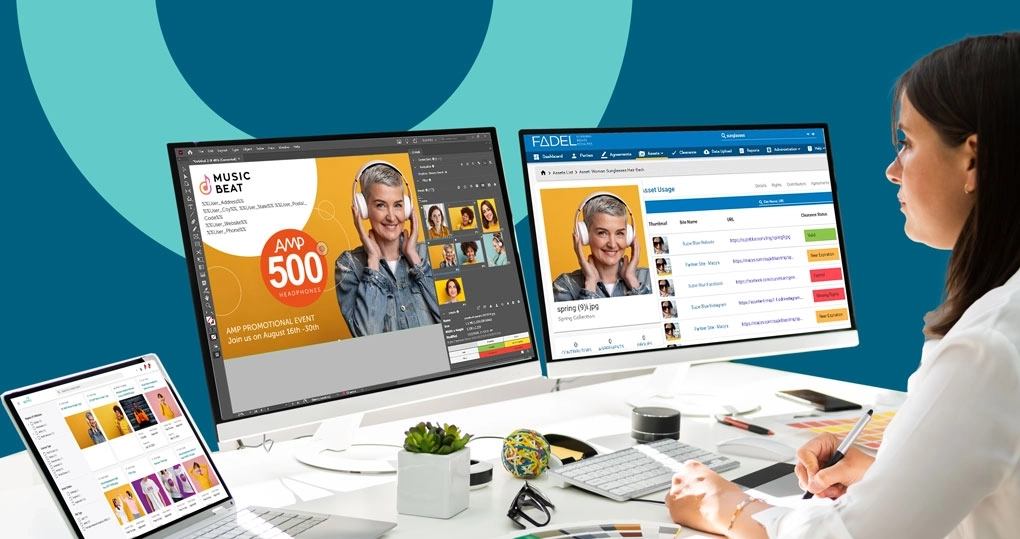What is Digital Rights Management?
With the evolution of “all things digital,” the term Digital Rights Management (DRM) has come to mean multiple things. At the core, the principle of Digital Rights Management is to protect the usage of one’s intellectual property according to copyrights in place.
Decades ago, and even with some applications today, digital rights management has more of a physical aspect to it – a technology to protect or control from the actual using, copying, or distributing of property. For instance, using encryption to prevent music from being played on certain devices, or limiting the number of times an application can be installed, or requiring a product license key to activate software.
However, in this blog article we’ll look at a more modern definition of Digital Rights Management – a sort of next generation of Digital Rights Management – and put it in the context of today’s marketer. In the current digital age, we’ve all heard the adage “Content is King.” But as content proliferates and new channels emerge, there are more limitations on how you can use, where you can use, and when you can use that content. Digital Rights Management is a strategy and process for ensuring that brands and their agencies are compliant with usage rights according to copyright regulations for all licensed content and aggregate content.
Why is deciphering content rights so challenging?
Content Usage Rights, particularly when it comes to marketing and advertising content can be highly complex. An ad may include licensed or produced music, photos, video and brands, as well as talent such as models, actors and photographers–all of which have different contracts you must adhere to, and those may change during different stages of the production cycle.
How can you properly assess the rights associated with these ads for omnichannel and multi-region campaigns?
A photo, for instance, comes with individual rights and usages for the models, the photographer, and perhaps the location, limits on when it can be used and where, as well as regional restrictions. Now imagine that that photo has three models in it–perhaps even a celebrity–all with unique contract rights, as well as a product placement to promote a famous brand. Then add video, music, and voiceovers to your list of agreements to manage.
Now consider that the photo is being used in different ads across multiple channels. You must then determine how the photo can be used and whether your campaign and ads are cleared to launch!
Why should you care?
As a marketer and advertiser, you are a steward of your brand. That entails promoting a positive brand image, not compromising brand equity—and definitely not putting a brand at risk for a lawsuit. The cautionary tales of multi-million-dollar lawsuits and settlements prove that unauthorized use is nothing to take lightly. You never want “lawsuit” to follow your brand’s name as the #1 most searched keyword pairing.
During one of FADEL’s recent brand management webinars, we took a poll across attendees about their confidence and visibility into asset usage rights and only 31% said they were certain they knew the usage rights and legal terms of their digital assets.
Without proper visibility into usage rights, key concerns are:
- Improper Usage Kills Brands. Misuse can cost millions in penalties–not to mention firefighting and rework. Plus, the negative press associated with a lawsuit can also lead to financial loss, for both the brand and the advertising agency.
- Stalled Campaigns Delay Go-to-Market. Having to peruse complex documents or track down content rights can cause costly stalls in production. The need to cross-reference between departments, for example marketing and legal, takes time and occupies resources. This can delay the time to profitability for a product, wreaking havoc on balance sheets.
- Content is Underutilized. Lack of visibility into creative inventory prohibits many advertisers from getting the most out of their investments. Many advertisers cannot clearly see what they own or, if they can, are unsure whether they can reuse it without violating their contract. To optimally monetize content, it should be available across departments and rights should be available real time, on demand.
Why is metadata not the “rights” answer?
Digital Asset Management (DAM) solutions help organizations easily manage digital assets across different stages of the content lifecycle, from ideation to distribution, optimizing storage and retrieval with metadata and taxonomy. It’s the first step in providing visibility into what you have and provisioning access to it internally and externally.
DAM is suitable when there’s only 1-2 variables impacting expiration. But when there are multiple variables, especially talent, music, contracts, etc., it typically needs to be supplemented by a rights management solution, which will be essential to determine what you can do with your assets – from rights to restrictions. This kind of solution captures information relevant to the industry and asset and compounds those rights together to make hierarchies of rules.
Storing this information in metadata might work if there are only simple, linear rules associated with assets such as you can only use the asset in the U.S. However, trying to support a matrixed rights model such as using an asset in one country between a certain period of time, another country for another period of time but only in a specific format, and a third asset in another set of formats with upcoming expiration dates, can be hard to capture in metadata. And what if you then amend a contract? You will need to make that change across all related assets and metadata which is a substantial and error-prone maintenance task.
What is the “rights” answer?
Having a single source of truth to manage content rights is now a must. It can help you avoid the costs involved in infringement or hunting with the legal department for obscure contracts, while also helping creative departments get to market quicker with their messages.
We recommend creating and automating a well-designed rights management strategy with these 10 steps. For more detail download FADEL’s Guide to Digital Rights Management: A 10-Step Checklist of DRM Best Practices.
- Inventory your Content and Agreements
- Centralize Rights Information
- Ensure Rights Management is part of your Governance Process
- Determine where you need a Rights Check across your Content Supply Chain
- Integrate Digital Rights Management with your 3rd Party Systems
- Carve out a Librarian Role
- Create a Well-designed Taxonomy
- Automate Rights Management
- Introduce Rights-Driven Workflow
- Provide Reporting and Analytics
Extending Aprimo DAM with the power of Rights Management
Aprimo has released new integration of Aprimo Digital Asset Management (DAM) with FADEL’s Digital Rights Management solution, Rights Cloud. The joint offering enables marketers at global brands to verify, automate, and manage sophisticated digital asset rights across multidimensional and simultaneous attributes (e.g., talent/celebrity contracts, event sponsorship agreements, in-market time periods, and region suitability among others).
With the new integration with FADEL Rights Cloud, marketers and ecommerce professionals can confidently leverage digital assets on a global level while staying in compliance by checking and clearing usage rights in real-time, every time, and gain the confidence that the brand experience they deliver is compliant and can maximize the potential of their premium content to drive revenue.


